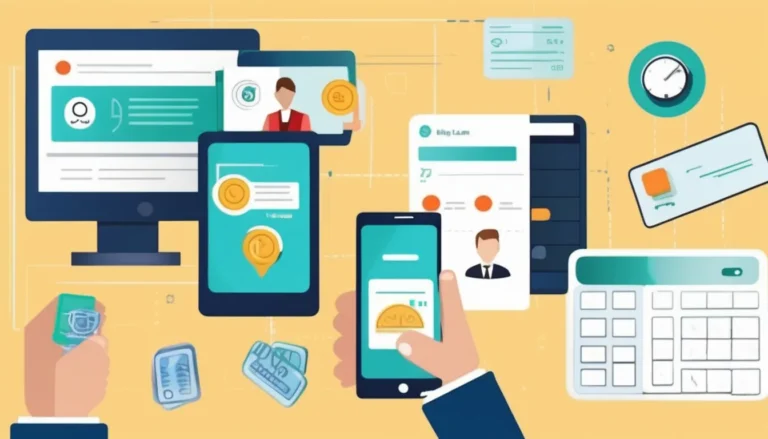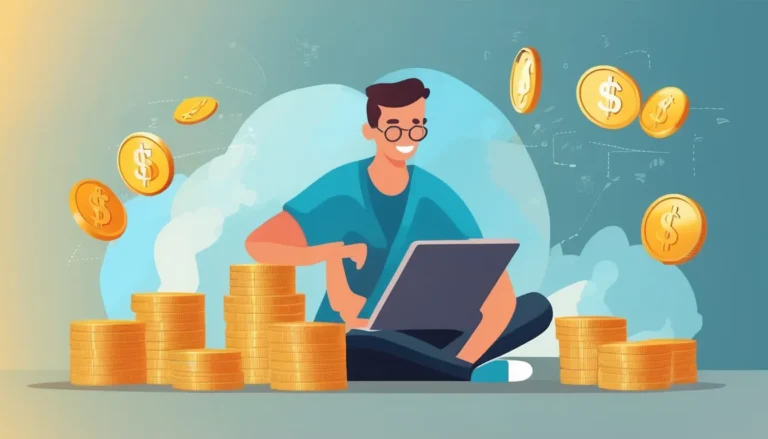Personal Loan Scams to Watch Out for in 2025: Staying Safe Online

In 2025, personal loans continue to be a popular financial tool for Americans seeking to consolidate debt, finance large purchases, or cover unexpected expenses. With the growth of online lending platforms and ease of access to financial products, personal loans have become more convenient than ever. However, this convenience comes with an increased risk of falling victim to personal loan scams, which can lead to financial loss, damaged credit, and even identity theft. In this article, we will explore the types of personal loan scams to watch out for in 2025 and provide tips on how to protect yourself from fraud.
The Rise of Online Personal Loan Scams
Online lending platforms have seen a significant surge in popularity, and for good reason. They offer quick access to funds, often with fewer requirements than traditional banks. However, this ease of access has also attracted scammers who prey on unsuspecting borrowers. Fraudulent websites and fake lenders have become more sophisticated, making it harder for consumers to tell legitimate offers from scams.
Scammers often use tactics like unsolicited phone calls, emails, or social media ads promising loans with “guaranteed approval” or “low interest rates.” Once the borrower expresses interest, they are required to provide personal information or make an upfront payment. In some cases, the scammer may never disburse the loan, leaving the borrower with a financial loss and a compromised identity.
Common Types of Personal Loan Scams in 2025
1. Advance Fee Loan Scams
One of the most common scams involves being asked to pay an “advance fee” before receiving a loan. The scammer may claim that the fee is for processing, insurance, or other administrative costs. Once the fee is paid, the victim either never receives the loan or is offered a loan with extremely high interest rates or unfavorable terms. These scams often prey on individuals who are in urgent need of funds and are desperate to get approved for a loan.
Red Flags:
- Request for upfront payment before loan approval
- Unclear or hidden terms and conditions
- Promises of “guaranteed approval” with no credit check
2. Fake Online Lenders
In 2025, many scammers create fake websites that look similar to legitimate lending platforms. These websites may have convincing designs, testimonials, and even logos that mimic well-known financial institutions. However, these sites are created solely to steal personal and financial information. Once a borrower provides their information, the scammer may gain access to their bank accounts or credit cards, leading to potential identity theft and fraud.
Red Flags:
- Lender’s website looks unprofessional or has spelling/grammar errors
- Lender is not registered with the Consumer Financial Protection Bureau (CFPB) or the Better Business Bureau (BBB)
- Contact information is missing or difficult to verify
- Unsolicited emails or messages urging you to apply for a loan
3. Phishing Scams
Phishing scams are a common tactic used by fraudsters to trick consumers into revealing personal or financial information. In this type of scam, the scammer may send an email, text message, or social media message that appears to be from a legitimate lender or financial institution. The message often includes a link to a website that looks like the real thing but is actually a fake site designed to steal your information.
The scammer may ask you to enter sensitive data such as your Social Security number, bank account details, or credit card information. Once they have this information, they can use it for fraudulent activities.
Red Flags:
- Messages that pressure you to take immediate action
- Links that direct you to a website with an unfamiliar or misspelled domain name
- Requests for sensitive information such as passwords, Social Security numbers, or bank details
4. Loan Restructuring and Debt Relief Scams
Debt relief and loan restructuring scams are becoming increasingly common, especially among individuals struggling with high-interest debts. In these scams, fraudsters promise to help consolidate your loans or lower your monthly payments. They may charge large fees upfront for their “services,” but in many cases, they provide no real help or only make the situation worse.
These scams can be particularly harmful because they prey on individuals already in financial distress. In some cases, the scammers may even advise you to stop making payments on your current loans, which can damage your credit and lead to collections.
Red Flags:
- Promises to “erase” or “settle” your debt for less than you owe
- Requests for payment before services are provided
- Aggressive marketing tactics, such as cold calls or unsolicited emails
5. Loan Recovery Scams
After falling victim to a personal loan scam, some individuals may be targeted by fraudsters offering to help them “recover” the funds they lost. These loan recovery scams often promise to work with authorities or use “special techniques” to recover your stolen money. However, once the victim pays an upfront fee for these services, they discover that no recovery effort was made, and their money is gone as well.
Red Flags:
- Claims that they can help you recover lost money from a scam
- Upfront fees for “recovery services”
- The company has no track record of successful recovery
How to Protect Yourself from Personal Loan Scams
While personal loan scams can be sophisticated, there are several precautions you can take to protect yourself from fraud in 2025.
1. Research Lenders Thoroughly
Before applying for a personal loan, make sure you research the lender thoroughly. Look for reviews, ratings, and any complaints filed with organizations such as the BBB or the CFPB. Check if the lender is registered and licensed to operate in your state. If the lender is not transparent about their credentials or does not provide verifiable contact information, it is a red flag.
2. Avoid Upfront Fees
A legitimate lender will never ask you to pay upfront fees before receiving a loan. If a lender demands payment before providing the loan, it is almost certainly a scam. Be particularly cautious if the fee is described as a “processing fee,” “insurance fee,” or “advance fee.” Legitimate lenders typically deduct fees from the loan disbursement itself, not before approval.
3. Check for Secure Websites
When applying for a loan online, ensure that the website is secure. Look for a padlock symbol in the address bar and make sure the website uses “https” rather than “http” for secure transactions. Avoid websites that seem suspicious or have unprofessional designs.
4. Be Wary of Unsolicited Offers
If you receive an unsolicited offer for a loan, especially one that seems too good to be true, proceed with caution. Scammers often use emails, texts, and social media ads to reach potential victims. If you did not initiate contact with the lender, it’s best to avoid responding to the offer. Verify the lender’s legitimacy by researching them independently.
5. Avoid Sharing Personal Information Over Unsecure Channels
Never share sensitive personal or financial information over unsecure channels such as email, text messages, or phone calls. Legitimate lenders will never ask you to provide your Social Security number, bank account information, or passwords via these methods. Always ensure you are communicating through secure platforms or official customer service numbers.
6. Use Trusted Loan Comparison Websites
There are reputable websites that allow you to compare loan offers from various lenders. These platforms often provide information on interest rates, terms, and fees, allowing you to make an informed decision. Stick to well-known websites that have strong consumer protections in place.
7. Report Suspicious Activity
If you suspect you have encountered a personal loan scam, report it immediately to the Federal Trade Commission (FTC), the CFPB, or your state’s attorney general. The sooner you report a scam, the better the chances of stopping the fraudster from targeting other victims.
Conclusion
Personal loan scams are a growing concern in 2025, especially with the rise of online lending platforms. By staying vigilant and being aware of the common types of scams, you can protect yourself from financial loss and identity theft. Always research lenders carefully, avoid upfront fees, and ensure that your personal information is only shared with trusted, verified institutions. Remember, if an offer seems too good to be true, it probably is. Stay safe online and make informed decisions when applying for personal loans.




